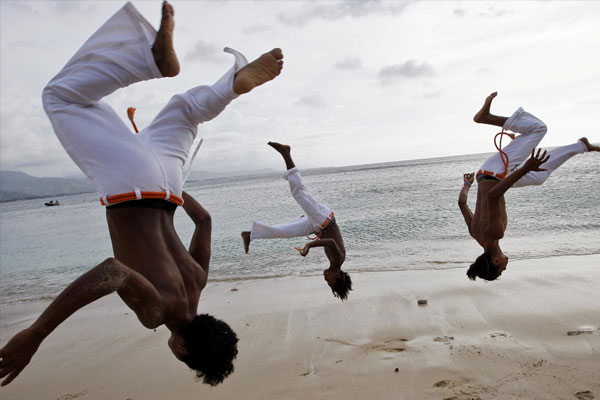Martial Arts Near Me
Capoeira
Capoeira is a unique Afro-Brazilian martial art that combines elements of dance, acrobatics, and music. With its roots deeply embedded in the history of Brazil, capoeira has evolved from a form of self-defense for enslaved Africans to a widely-practiced art form and recreational activity. This article delves into the history, techniques, and current status of capoeira, shedding light on the diverse cultural influences and complex movements that define this captivating martial art.
The history of capoeira traces back to the time of slavery in Brazil. Enslaved Africans in the 16th century created capoeira as a means to resist oppression, preserve their cultural heritage, and escape bondage. However, due to its clandestine nature, the exact origins of capoeira remain elusive. It is believed that capoeira's movements were derived from various African combat techniques brought by different ethnic groups and mixed with Brazilian indigenous fighting styles.
Initially practiced only by the enslaved, capoeira gradually gained recognition and popularity among the wider Brazilian population. As it evolved, capoeira became ingrained in Brazil's cultural fabric and was performed at street festivals, community gatherings, and even among the military police. Despite periods of prohibition and criminalization due to its association with marginalized groups, capoeira managed to persist through hidden practices and underground clubs.

Capoeira movements are characterized by fluidity, agility, and flexibility. The practitioners, called capoeiristas, engage in a rhythmic and highly stylized display of combat, often in a circle called a roda. The roda often features live music, played on traditional instruments such as the berimbau, pandeiro, and atabaque, creating a captivating atmosphere that accompanies the physical movements. The music provides a guide for the capoeiristas, influencing the pace and style of their movements.
Capoeira techniques are diverse and encompass a wide range of kicks, sweeps, flips, and acrobatics. The ginga, a fundamental movement in capoeira, involves a rhythmic and continuous swaying motion that allows capoeiristas to transition smoothly between attack and defense. Other common techniques include kicks like the meia-lua (half-moon), queixada (jaw), and martelo (hammer), each executed with precision and creativity. Capoeira also incorporates takedowns, ground movements, and evasive maneuvers to confuse opponents and maintain fluidity in the roda.
The philosophy of capoeira places importance on respect, discipline, and camaraderie. Capoeiristas engage in games rather than fights, emphasizing cooperation rather than competition. The goal is to exchange movements and display skill, rather than overpower or harm opponents. Capoeira fosters a sense of community among its practitioners, who often form close bonds through training, music, and shared experiences.
The modern-day status of capoeira is multifaceted. It has evolved into a popular recreational activity, attracting enthusiasts from all walks of life, both in Brazil and beyond. Capoeira academies and schools have emerged worldwide, promoting the teaching and practice of this unique martial art. Capoeira has also gained recognition as an intangible cultural heritage by UNESCO, highlighting its value as an expressive art form and a symbol of Brazil's cultural identity.
Furthermore, capoeira has become a global phenomenon, with countless events, championships, and international gatherings dedicated to celebrating and showcasing its beauty. The Batizado, a traditional capoeira ceremony, marks the progression of students and welcomes newcomers into the community. This ceremony, accompanied by music and roda performances, reflects the cultural significance and spiritual essence that capoeira holds for its practitioners.
Despite its popularity, capoeira still faces challenges and debates within its community. Questions about authenticity, commercialization, and the balance between preserving tradition and embracing innovation continue to shape the evolution of capoeira. Some argue for strict adherence to the art's traditional roots, while others explore new creative expressions, integrating elements from different disciplines into their practice.
Capoeira's rich history, intricate techniques, and current status as a global martial art highlight its cultural significance and enduring appeal. From its origins as a self-defense system for enslaved Africans to its transformation into a widely-practiced art form, capoeira stands as a testament to the resilience and creativity of its practitioners. As capoeira continues to evolve and adapt, its diverse movements, rhythmic music, and vibrant energy captivate both the participants and spectators, making it a true cultural treasure.